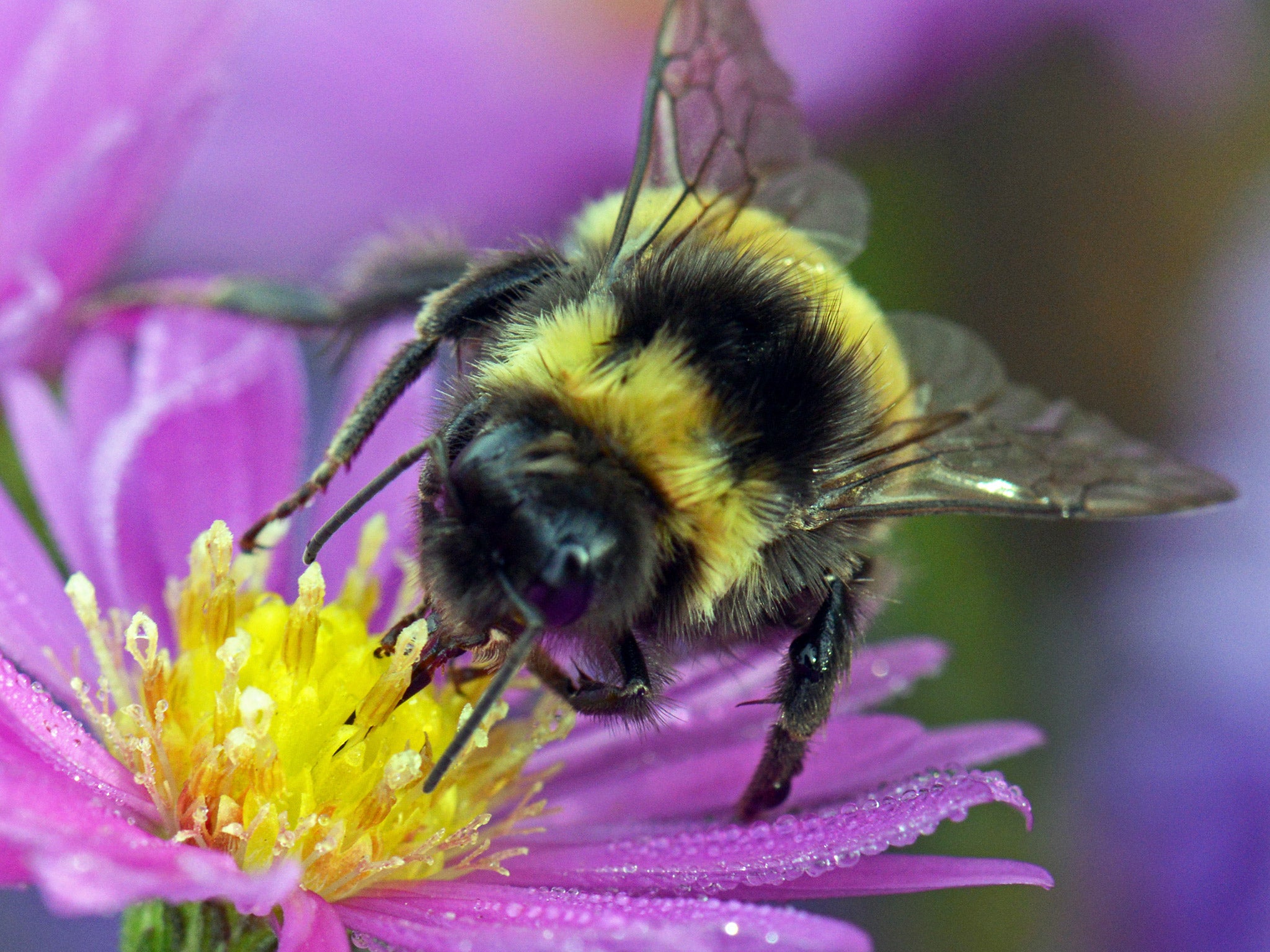If you want to rumble a bumblebee, now’s your chance
Nature Studies: If we lose our pollinators, huge swathes of agriculture would collapse

As the Easter weekend is approaching and many people will be making their first trips of the year to the countryside, I have a wildlife-watching suggestion with a difference: look out for pollinators.
As a society, we are just beginning to take on board the huge importance of the insects that fertilise our flowering and fruiting plants: the widespread realisation only dates from a decade ago, when honeybee populations in the US started disintegrating in the mysterious malady known as colony collapse disorder.
Honeybees in the US have become far less important for producing honey than for pollinating the giant crops of intensive agriculture, such as the California almond orchards. A million beehives are shipped in every spring, as local insects are far too few or absent altogether, having been decimated by pesticides. The value of pollination to US farming as a whole has been estimated at $29bn (£19.5bn) annually (and at £200m per year for agriculture in Britain).
If we lose our pollinators, huge swathes of agriculture would collapse. All the world’s 350,000-plus species of flowering plants require pollination; about 10 per cent of them are pollinated by the wind, but the rest require a carrier to take pollen (in effect, the semen of the plant) from the male parts of one flower to the female parts of another, and so fertilise it. This carrier is nearly always an insect, although in the tropics it can be a hummingbird or even a bat.
Many of us think of honeybees as the principal insect pollinators, but in truth they only represent a tiny fraction: bumblebees and other wild bees carry out about two-thirds of the pollinating in Britain, and if you’re in the countryside over Easter, you may spot them pollinating the early spring flowers.
Bumblebees (with 25 species in Britain) are the easiest to see at the moment, as the big furry queens are visible now – they alone survive the winter and emerge to found new colonies every spring. But just as important are the solitary bees, which nest alone, and of which we have more than 250 species – more than all the species of our breeding birds.
You need to be a specialist to know them all, but the easiest to get acquainted with are the mining bees in the genus Andrena, which contains about 60 species, such as the early mining bee and the tawny mining bee. They’re hairy like bumblebees but much slimmer: I was watching Andrena bees last week busily collecting nectar and pollen from lesser celandine flowers, glossy bright yellow and among our earliest and commonest blooms (and an Andrena bee is also the pollinator of our rarest wild flower, the lady’s slipper orchid).
But there are many other insect pollinators of our wild and garden plants, from hoverflies to moths, and many of them are threatened, not least by pesticide use; so there was applause from many environmentalists last November when the Government – for the first time – set out a plan to protect them all.
The National Pollinator Strategy seeks to guarantee pollinators “food and a home”, and to find out how many there are (its initial estimate is 1,500) and to start to survey them, even though some critics think it is too complacent about the pesticide threat.
But Matt Shardlow, the chief executive of Buglife, the invertebrate conservation charity, thinks it is an important starting point, and I agree. In fact, I would go further: I think it is the single best thing the Coalition has done for the natural world.
Not that that’s saying much. The departing Government’s achievements in protecting nature are pretty meagre – which, as the election approaches, is a subject I will return to.
Join our commenting forum
Join thought-provoking conversations, follow other Independent readers and see their replies
0Comments